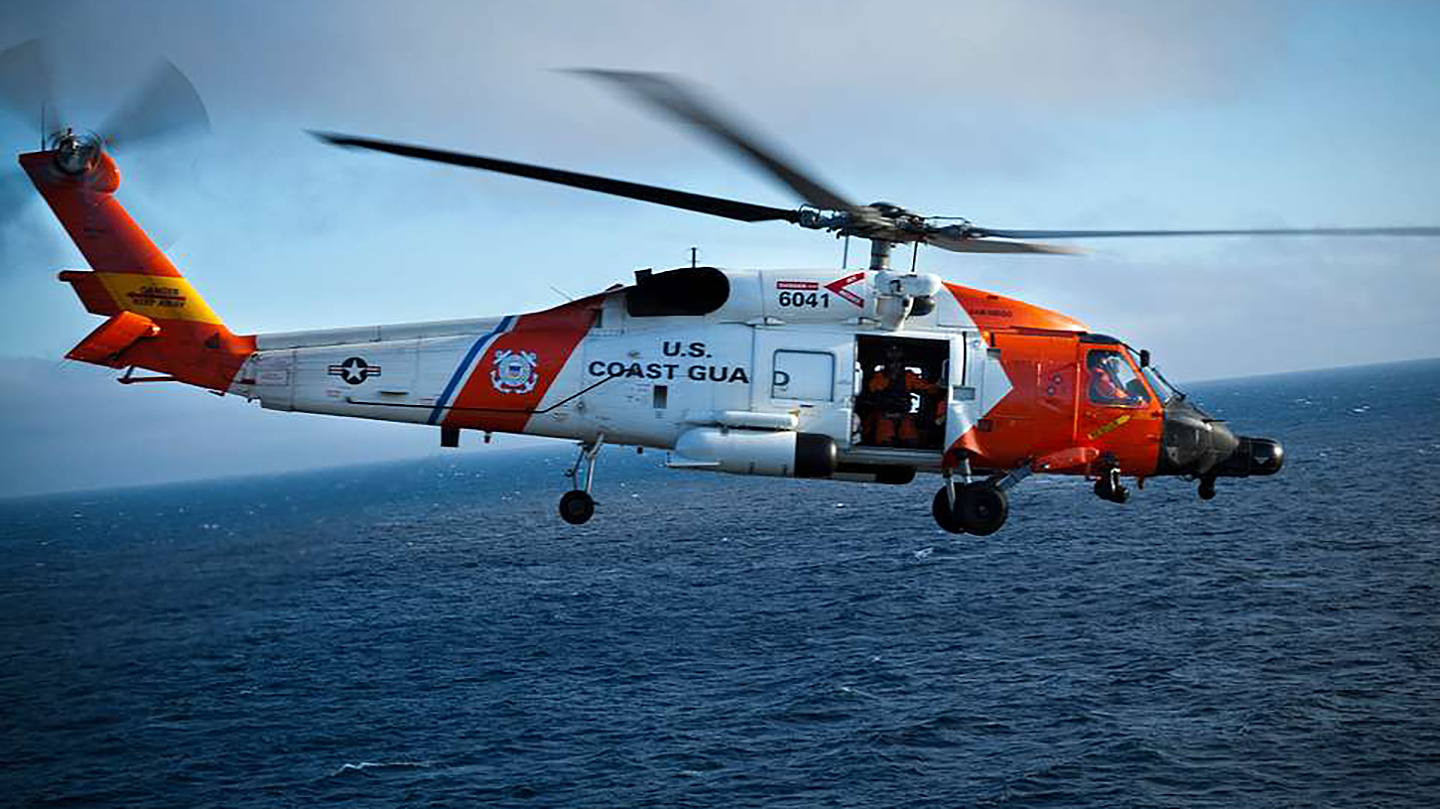Few jobs in aviation are quite as demanding as operating helicopters in a maritime environment once the weather takes a turn for the worse. And while episodes highlighting the incredible bravery of the U.S. Coast Guard are by no means unfamiliar to us, this recent video is especially noteworthy for showing just how close to the limits the Coasties operate their helicopters — when the situation demands it — and how very real danger is never far away.
The video in question shows a Coast Guard MH-60T Jayhawk attempting to evacuate a passenger onboard a cruise liner. While missions of this kind are fairly routine for the service’s medium-range recovery helicopter fleet, in this instance the Jayhawk comes perilously close to ending up in the sea after hitting a brutal bit of bad weather as it flies away from the ship.
While these videos appeared on social media only recently, the Coast Guard confirmed to The War Zone that the hazardous-looking medical evacuation (medevac) mission happened last Saturday, approximately 300 miles offshore of Fort Morgan, Alabama.

According to the Coast Guard’s own statement, one of its Jayhawk helicopters got into trouble during the attempt to retrieve a 76-year-old man “experiencing heart attack-like symptoms” from the cruise ship Carnival Dream. Operated by Carnival Cruise Line, this huge vessel is a little more than 1,000 feet long and plies its trade out of Galveston, Texas, carrying as many as 3,600 passengers to the Caribbean and the Panama Canal.
Also involved in the medevac effort was another Jayhawk, as well as one of the Coast Guard’s HC-144 Ocean Sentry medium-range surveillance aircraft, based on the twin-turboprop Airbus CN-235.
The first Jayhawk, operating out of Coast Guard Air Station New Orleans, and the Ocean Sentry, from Coast Guard Aviation Training Center Mobile, had originally been called in to carry out the medevac at around 4:31 A.M. when one of the crew members aboard the cruise ship reported the passenger in distress. Each Jayhawk normally operates with a crew of four: typically, a pilot, copilot, crew chief, and rescue diver or medic.

“The [first] Jayhawk aircrew arrived on scene and lowered their rescue swimmer,” the Coast Guard said. “While hoisting a cruise ship nurse, a severe squall caused the aircrew to back off from the ship. The helicopter then encountered a severe downwind, prompting the aircrew to recover the aircraft close to the water’s surface. Both the Jayhawk helicopter and Ocean Sentry aircraft returned to base due to [poor] weather.”
Cmdr. Keith Blair, commanding officer of Air Station New Orleans, provided more details of the abortive medevac by the first MH-60: “During the rescue, the aircrew experienced severe and rapidly deteriorating weather that forced them to abort the mission. Through exceptional real-time risk management, crew resource management, and superb piloting, the aircrew was able to safely recover the aircraft and land at the air station without further incident.”
@thenewararea51 , a commercial helicopter pilot and friend of the site had a similar take on what was seen in the video:
“I’m thinking that they saw the storm coming, and they didn’t want to be connected to the hoist line and close to the ship in case of a strong downdraft, and it looks like that’s what they encountered.”
Despite the worsening weather, a second Air Station New Orleans Jayhawk later returned to the scene, successfully hoisted the patient and rescue swimmer, and transferred the patient to awaiting emergency medical services personnel at University Medical Center in New Orleans.
All in all, these videos give an idea of just how dangerous the work of the Coast Guard can be, and the very limited margin of error once the weather really takes a turn for the worse over the open ocean. Above even that, the video shows just how fast things can go from fine to terrifying and underscores the determination and sheer skill of the service’s personnel — people who risk their own lives every day in order to save others.
UPDATE 5/3/2023
In response to additional queries about this incident from The War Zone, a spokesperson for the U.S. Coast Guard’s District 8 has now provided the following statement:
“The Coast Guard places the utmost importance in the safety of the men and women performing our oftentimes dangerous missions. We will be conducting an investigation into the circumstances which caused this incident in order to ensure the continued safety of our crews during severe weather operations.”
Contact the author: thomas@thedrive.com
